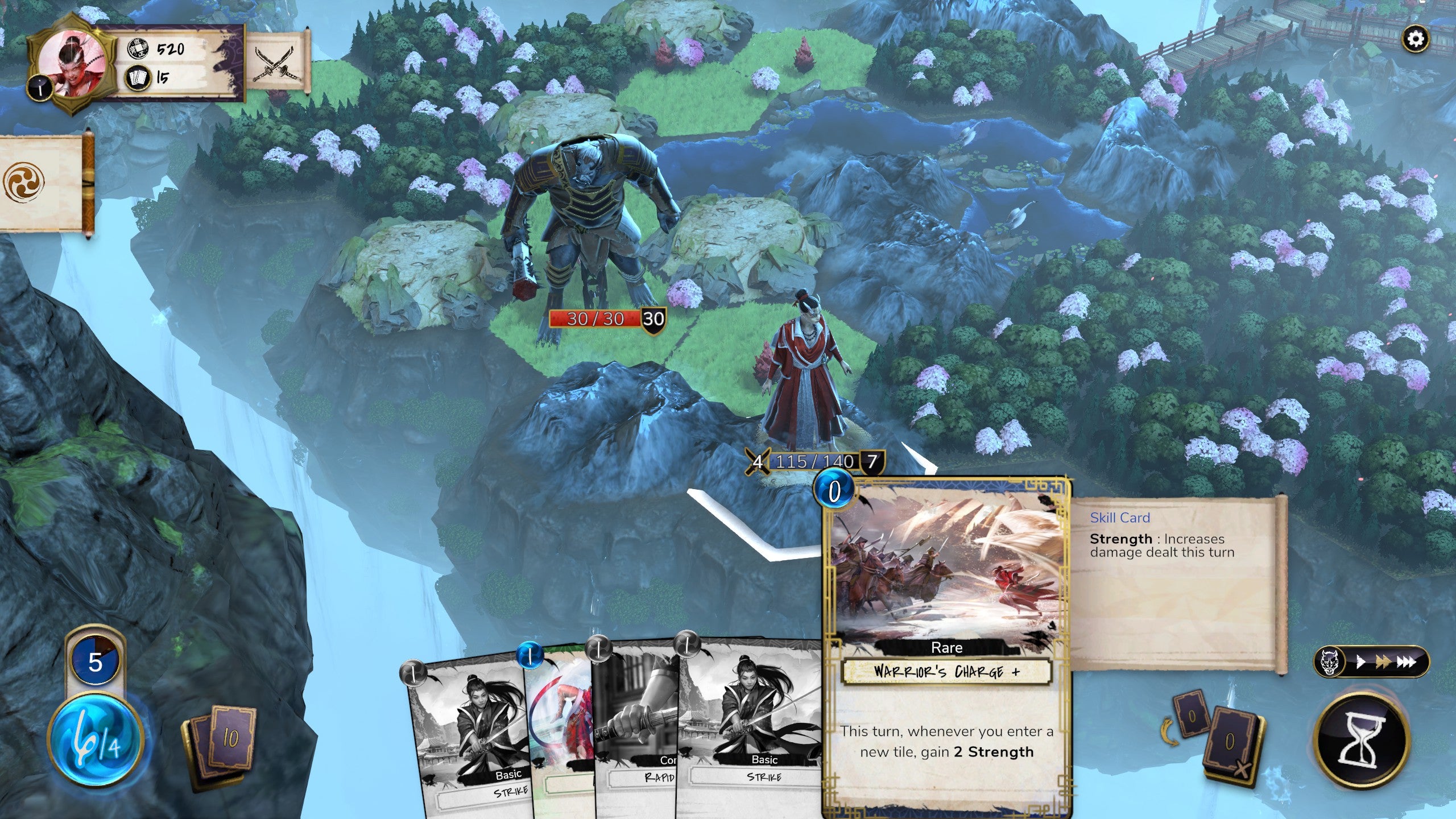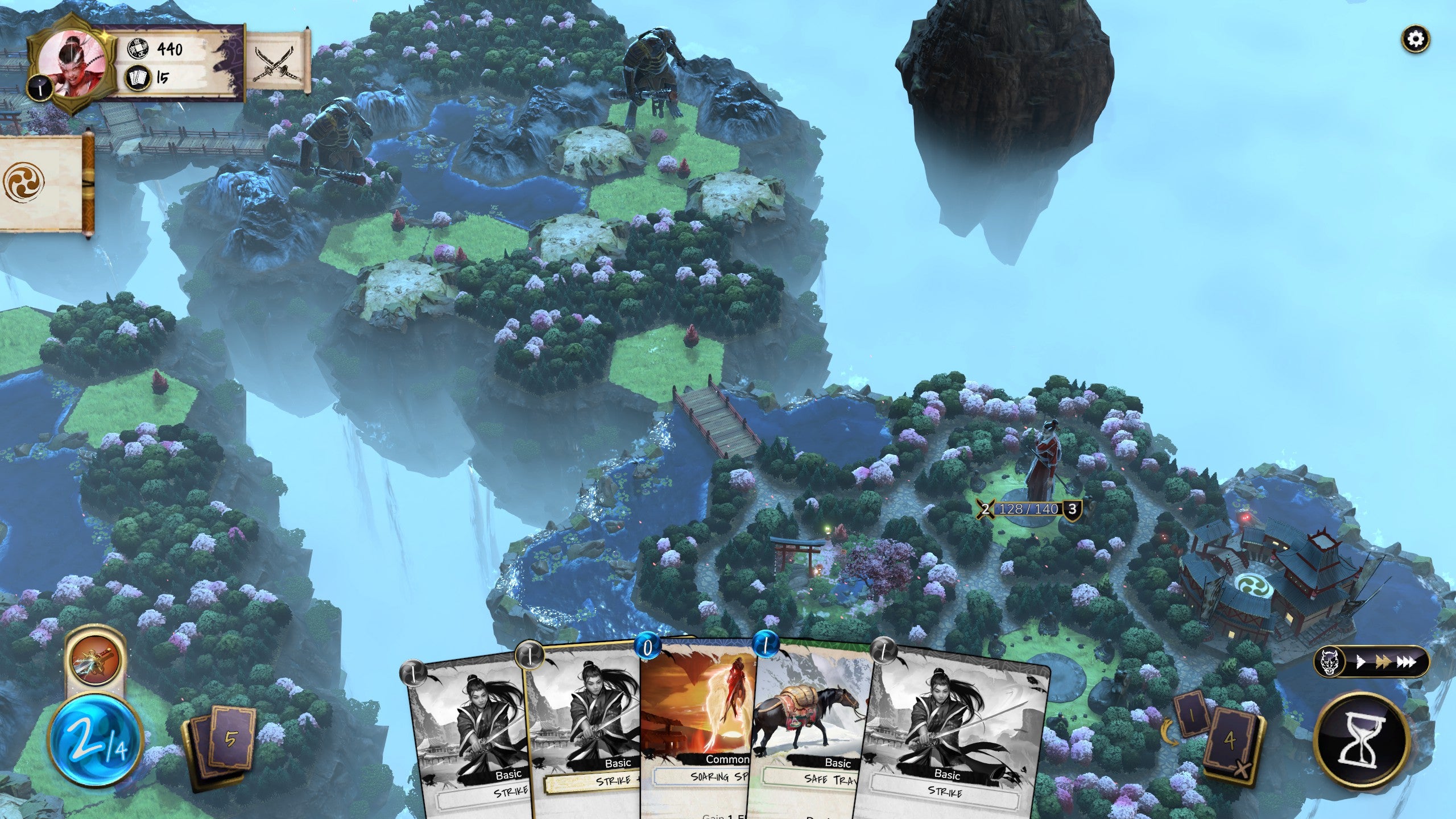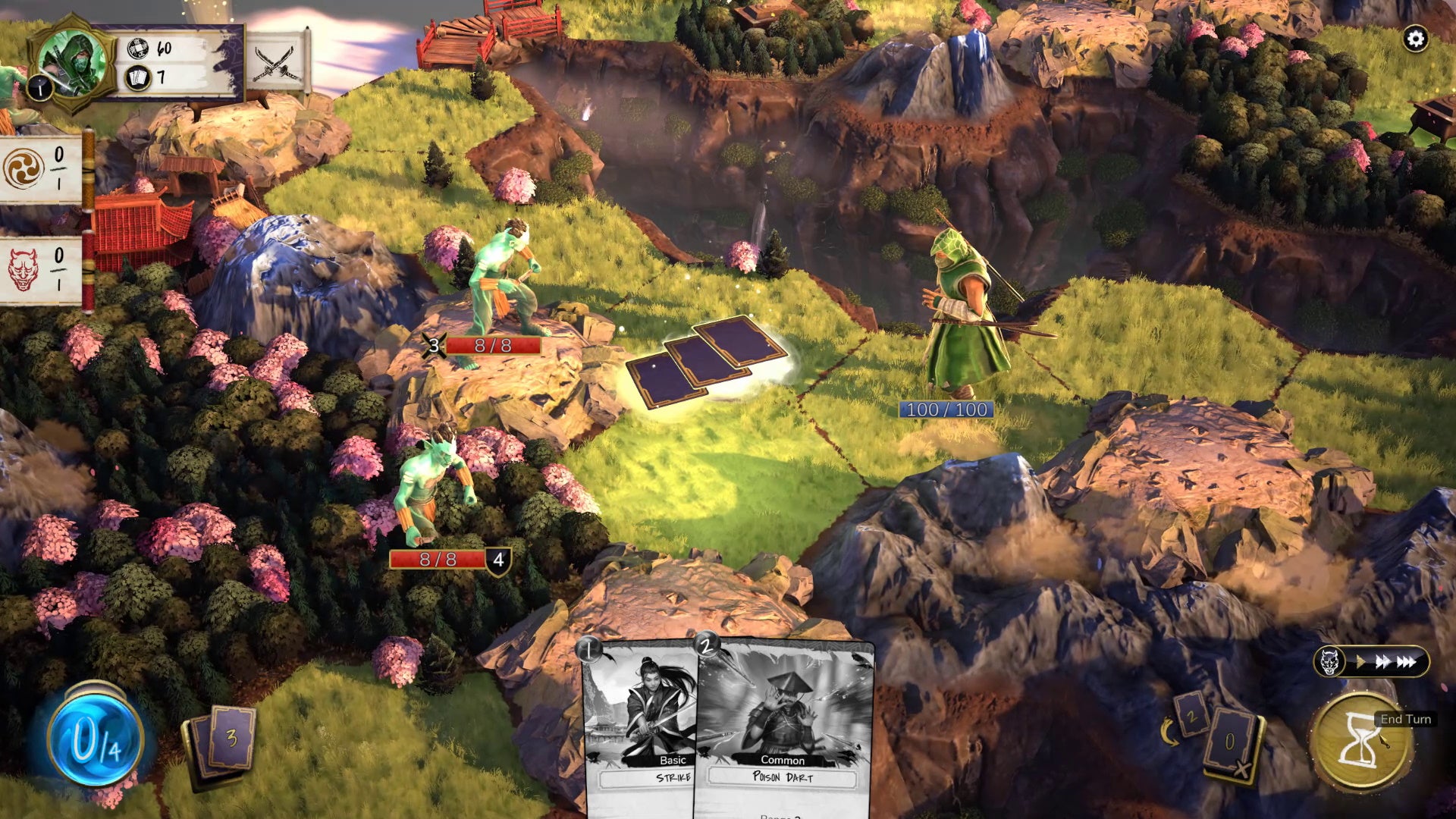It’s certainly a refreshing take on deckbuilding, and it lends itself to even more spontaneous wins and comebacks than the usual frisson of tension you get from simply drawing a good or bad hand. But with main story missions quickly ramping up in difficulty, that scramble for bigger and better cards up front is often Mahokenshi’s undoing. The whims of chance are felt more keenly than ever in Game Source Studio’s debut deckbuilder, and they never quite felt like they’re tipped in your favour. There are four of the titular Mahokenshi to choose from when selecting a mission, each themed around a creature of Japanese myth. The wing-sprouting Ayaka has a touch of Tengu running through her veins, for example, allowing her to use less energy while travelling across different types of terrain when she’s flying. Sota, on the other hand, is your stealthy, poison kunai-throwing ninja type, channelling giant spider monster Ogumo to weave cunning traps and attack from afar, while Kaito is your classic tank samurai with his watery Kappa defences, favouring the idea of waiting until he’s surrounded before unleashing his fury. Finally, there’s Misaki, who uses Kitsune magic to confuse and disorientate her foes from a distance. There’s a teensy bit of card sharing between these different characters, but for the most part they do feel distinct from one another, offering up noticeably different avenues of play and unique card attacks as you hop across its floating Celestial Islands to stop evil demons from overthrowing the place. Missions play out in turn-based fashion. You can only spend a certain amount of energy per turn, which is split between playing cards and moving between its elaborately designed plains, hills, forests and mountains, but using this terrain to your advantage can turn the tide in your favour. Forests strengthen your base defence, for example, while mountains and hills boost your attack, making its hexagonal tiles much more than just artful decoration. Navigating these open-ended maps and weighing up the risk and reward of deviating from your central objective to visit additional shops, dojos and gold-giving treasure chests to strengthen your deck provides a strong strategic backbone for Mahokenshi. Later maps will also let you increase your base energy, attack, defence and draw number if you travel to the requisite meditation spots, but when several missions have some sort of time limit on them, speed is very much of the essence. Mahokenshi thrives on scaling up its difficulty the longer you spend in any given mission - giant demons gaining more life for every village they destroy, for example, or an entourage of mages imbuing beastly oni monsters with ever-increasing attack and defence buffs - and it manages to turn even simple movement choices into tough, considered decisions. Alas, I often found that tactical tightrope just wasn’t quite steady enough to find a satisfying foothold a lot of the time, and I think part of this stems from the slow pace with which you’re able to level up your characters. The more experience you gain, for example, the more cards become available to that warrior on a permanent basis, giving you more variety to choose from in shops and the wider map drops. To its credit, Mahokenshi is quite generous in this respect, and will dole out experience points for completed side objectives and enemy kills even if you fail the wider story mission or die in battle - a concession that luckily prevents those (admittedly frequent) ‘Defeat’ screens from veering into outright frustration. Levelling up can be hard-going without those big mission and objective windfalls, though, and its relentless AI and high difficulty mean those repeat attempts at failed maps will inevitably feel like grinding after a couple of goes. But it’s not the speed of experience points that’s necessarily Mahokenshi’s biggest problem. It’s building any kind of cumulative experience of actually playing as these characters that it’s lacking, as you’re not only starting from scratch with them every single mission, but the randomised nature of what you’re able to add to your deck also makes it hard to get a real feel for how they work. The smaller, more linear, optional challenge missions quickly became essential training grounds when I was trying to experiment with different characters, but when there are such sharp difficulty spikes between those and the main story missions, even that preliminary grinding often wasn’t enough to see me through to victory. The odds seemed too stacked in the demons’ favour a lot of the time, and I often found myself getting utterly walloped before I had a chance to really dig in to the actual deck building. In the end, Mahokenshi was just too much of a drag to be truly enjoyable. It has its moments, for sure, and those who thrive on the crushing rhythms of Soulslike games may get more out of this than I did. But when you know those sweet card synergies you just discovered will be brushed away again at the start of the next mission, you begin to feel less like the godly heroes you’re meant to be inhabiting, and more like some wandering scrub blundering their way through the fickle realms of chance. Lady Luck is a cruel mistress in the world of Mahokenshi, and I could never quite shake the feeling it was holding its cards a little too close to its chest.



